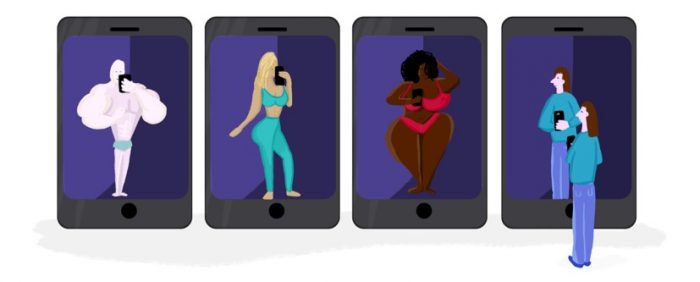While conducting the research for “Pathways: How digital design puts children at risk”, we have had countless discussions about the nature of social media design, how it has changed over the years and how this impacts the behaviours of millions of users around the world.
One of the many questions relating to design we’ve been thinking about: does the nature of social media promote extreme behaviour?
Social media is often disparaged for its celebration of the banal and the everyday. We’ve all marvelled at pictures of other people’s breakfast. However, when we look at what children see or create avatars to find out what they can be served, it’s the extremes that draw our attention.
This makes sense. When at the touch of a screen you can see Messi’s greatest goal, or the craziest stunt, in a world of content that is shared over and over, with algorithms that promote the most popular content, the stand-out moments or individuals will always rise to the top. Not many people want to watch the 90% of goals that aren’t the greatest or the most humiliating over and over, and there’s little incentive to share them. They’ll always attract a small audience who have a personal interest, but for the big numbers and influence it has to be extreme.
The same effect seems to apply to human bodies on social media. If you want to stand out physically in this digital world you need to be the most ‘beautiful’, have the most bulging muscles, the biggest chest and bum or the thinnest waist.
Conventional media has long presented us with impossible ideals. Sports, film and music stars were always more ‘perfect’ than most could aspire to, but even in their perfection they still had to be multi-talented in some respects to do their job and be a role model.
If the design of social media platforms pre-disposes to the extreme, do these businesses have a responsibility to consider the impact of disproportionate exposure on users? Can a series of extreme events or bodies constitute a misrepresentation of the world we live in?
Clearly adults can make a choice to explore niche and extreme content, and hopefully recognise it for what it is, but given the role social media increasingly plays in children’s social development, and shaping their ideas about what success looks like, do we need to think harder about what they might be learning from what they see? The focus is often on ‘inappropriate’ imagery, but when we talk to children in our research we are often equally concerned by the drip, drip effect of content that doesn’t entirely transgress boundaries, but can nevertheless come to dominate young digital lives.

Does it matter if it’s real?
If you scan through the report, you’ll notice there’s something not quite right
about some of the images our avatars were served. It’s difficult to be sure in
every case, but a lot of the extreme body images, and possibly some of those
relating to self-harm, are potentially manipulated. In some cases, it’s through
camera angles and poses, but there is also some clear evidence of editing and
reshaping.
We know from other research that editing software is extremely popular with young people. Filters and lenses are built into some of the most popular social media platforms. In many cases these might be considered fun, however it looks to us as though they are starting to influence aesthetic ideals and contributing to an overall misrepresentation of reality.
The desire to mimic
Humans are a copying species. We all want to fit in. When we research what children are doing online, from roughly 10 onwards it is painfully transparent that a lot of their behaviour and interests are focussed on trying to work out what will make them popular. It’s a big part of how they learn how to behave.
Social media influencers are popular by definition, so it’s no surprise that children want to copy them.
Social media platforms have increasingly incorporated features that make it easier for users to ‘copy’ existing content, and many children love being able to simply and easily take elements from existing content to create their own. This suits the social media companies who rely on the constant creation and sharing of content, however we wonder if more thought should be given to whether children should be encouraged and supported to copy anything and everything they see online.
The Gamification of social relationships
Our wider work increasingly explores the impact of measures on systems and human behaviour. We’ve also done a number of projects on gamification in design and the opportunity to further explore this area was one of the things that made this project so rewarding for our team.
We think there’s probably enough in this subject to write a book, however for now we’ll just say that we have long seen children hungry for likes, chasing the ratio – to be followed by more than you follow – and taking their status on social media extremely seriously. All features that provide immediate feedback around relative popularity for the individual or the content they post – making it clear who is winning and who is losing – are likely to have a powerful effect on young audiences for whom social capital and potentially commercial success is intrinsically linked to digital status. These are powerful behaviour shaping mechanisms and their use should be given more consideration than it has to date.
We’re happy to chat to anyone who would like to explore these themes further. Send in an email to contactus@revealingreality.co.uk
